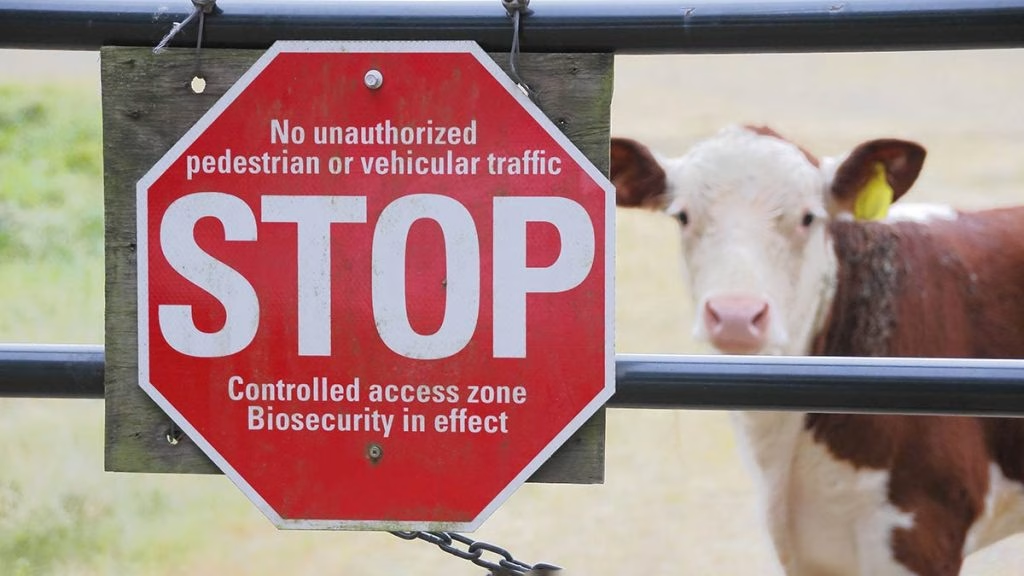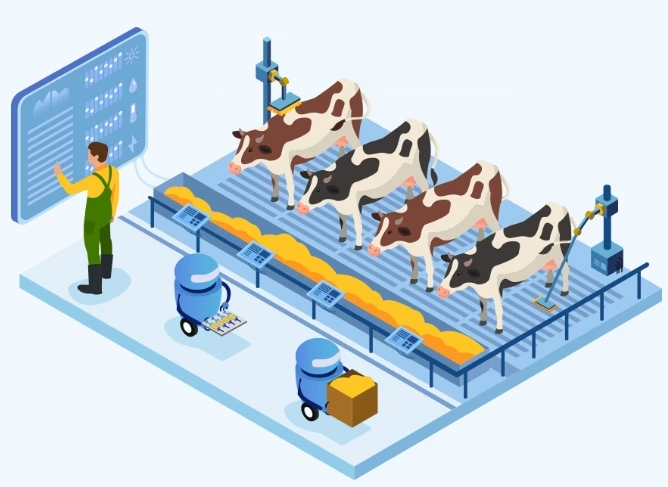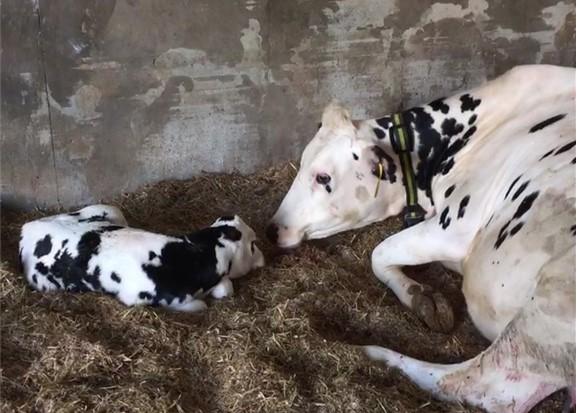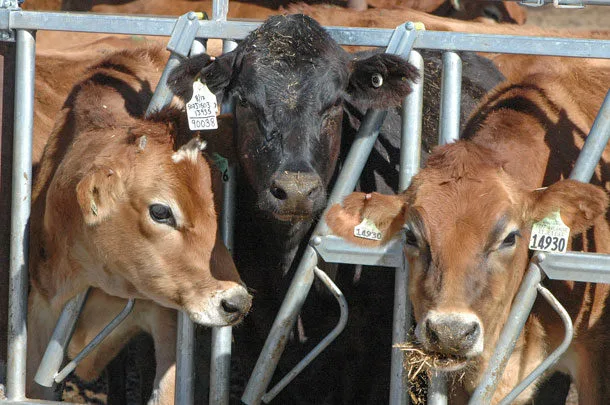Can Brazil ease trade tensions with the U.S. and EU, or will they join China’s Belt and Road Initiative? Find out the impact.
Summary:
Brazil is contemplating joining China’s Belt and Road Initiative (BRI) amid increasing global trade tensions. This move, spearheaded by Agriculture Minister Carlos Favaro, seeks to counteract protectionist measures from the U.S. and EU, sparking debate within the government on securing investments versus straining current alliances. U.S. Trade Representative Katherine Tai advises caution due to China’s growing influence in Latin America. As Brazil weighs its options, its decision pivots on balancing economic resilience with development goals, especially concerning its primary trading partner, China, impacting sectors like dairy reliant on foreign investments and market access. The internal debate mirrors broader questions on balancing prospects of new investments with maintaining strong ties with traditional allies for Brazil’s long-term economic and agricultural sustainability.
Key Takeaways:
- Brazil is considering joining China’s Belt and Road Initiative (BRI) to counter U.S. and EU protectionist measures.
- The move has sparked debate within President Lula’s administration, with some seeing it as a means to secure investments, while others fear potential strain on relations with the U.S. and EU.
- U.S. Trade Representative Katherine Tai warned Brazil of the risks associated with China’s growing influence in Latin America, urging a careful assessment of economic impacts.
- Brazil’s joining the BRI could give it access to significant financing and infrastructure projects, which aligns with the country’s development objectives.
- China is increasingly becoming a prominent player in Latin America, as indicated by planned state visits and expanding influence in neighboring countries like Mexico.
- Brazil’s dairy industry could benefit from enhanced infrastructure and investment opportunities through participation in the BRI.
- The situation highlights a need to balance geopolitical partnerships and economic growth strategies while addressing potential risks and benefits.

Imagine standing at a crossroads, where one path leads to a significant global powerhouse with deep pockets, and the other maintains ties with longstanding trade allies. This is the very conundrum Brazil finds itself in as it weighs the decision of joining China’s Belt and Road Initiative (BRI) or preserving its significant trade relationships with the U.S. and EU. This choice for Brazil’s dairy industry is not just a simple diplomatic decision—it could be a potential game-changer, opening doors to unprecedented growth. An executive at a central Brazilian dairy cooperative said, “You can’t have your cake and eat it too,” emphasizing the strategic quandary. Why does this matter to dairy farmers? Consider the potential influx of investment and infrastructure development that the BRI offers. Can you afford to ignore such an opportunity for growth? However, turning towards China could also mean risking established markets in the U.S. and EU, leaving many to ask: Is the potential gain worth the gamble?
Paving Paths: Brazil’s Strategic Tango with China’s Belt and Road Initiative
The Belt and Road Initiative (BRI), launched by China in 2013, is a massive global development strategy to enhance regional connectivity and embrace a brighter economic future through infrastructure investments in nearly 70 countries across Asia, Europe, and Africa. The BRI’s significance lies in its ambition to create a modern Silk Road by fostering trade links and boosting growth, thus having the potential to transform global trade dynamics.
Brazil’s current trade landscape is characterized by complex relationships with major global powers, notably the U.S., EU, and China. While the U.S. and the EU have historically been vital partners, Brazil has increasingly pivoted towards China over the last decade, with China now its primary trading partner. This shift significantly impacts various sectors, including the dairy industry, which relies on international investments and market access.
Trade tensions have escalated recently, with the U.S. and the EU implementing protectionist measures that challenge Brazilian exports, including dairy. These barriers have intensified Brazil’s interest in the BRI, which seeks to secure alternative routes and partners that could mitigate the economic strain caused by these measures. As Brazil navigates these turbulent trade waters, the BRI is a strategic maneuver to safeguard its economic interests and foster growth opportunities in underserved sectors like dairy.
Navigating Diplomacy and Development: Brazil’s BRI Dilemma
The debate within Brazil’s government over the decision to join China’s Belt and Road Initiative (BRI) highlights a complex intersection of economic opportunity and geopolitical strategy. On one side of the discussion, Brazilian Agriculture Minister Carlos Favaro forefronts the argument that participation in the BRI could pave the way for substantial new investments, offering a promising outlook for Brazil’s economic future. He argues that Brazil could benefit from accessing significant financing and infrastructure projects that align with the nation’s development goals, potentially boosting the agricultural sector, among other industries. BRI programs can offer transformative benefits, positioning Brazil as a key player within the Chinese economic ecosystem.
However, not all President Luiz Inacio Lula da Silva’s administration members are convinced. Critics of the move to join the BRI express concerns over the potential implications of this alignment on Brazil’s established economic relationships, particularly with the United States and the European Union. These Western partners may view Brazil’s entry into the BRI as a shift away from their mutual trade interests, possibly leading to strained diplomatic relations. There is apprehension that Brazil’s increased alignment with China could necessitate navigating complex international dynamics, with risks of new trade barriers or retaliatory protectionist measures.
The internal debate reflects a broader question facing Brazil: How can the prospects of new investments be balanced with the need to maintain strong ties with traditional allies? These decisions could influence market access and competitive positioning for Brazil’s dairy industry and allied sectors. The government’s choice could ultimately reshape the economic landscape, impacting everything from trade policies to local production capabilities. As stakeholders and policymakers continue to deliberate, the ramifications of Brazil’s potential membership in the BRI remain a pivotal consideration for the country’s future.
Strategic Choices: Unveiling the Potential Benefits of Brazil’s Alignment with China Amid U.S. ConcernsU.S. Trade Representative Katherine Tai has been vocal about Brazil’s potential risks if it joins China’s Belt and Road Initiative (BRI). Her warnings at the Bloomberg B20 event in São Paulo underscored the importance of economic resilience and the need for Brazil to weigh the potential geopolitical implications of aligning more closely with China’s expansive infrastructure program. The U.S. views the BRI as a tool for China to increase its influence globally, especially in regions traditionally considered under the U.S. sphere of influence, like Latin America.
U.S. Trade Representative Katherine Tai’s Perspective: The Potential Economic Impact of China’s Influence on Brazil
This stance is part of a broader U.S. strategy to reinforce its trade priorities and partnerships within Latin America. Recent dialogues with Mexican counterparts to review and strengthen the U.S.-Mexico-Canada Agreement (USMCA) echo a similar sentiment of prioritizing resilient and reliable trade conditions. As China’s presence in Latin America, including Mexico’s manufacturing sector, continues to grow, the U.S. is keen to reaffirm its commitment to fostering stable economic ties.
Brazilian Milk Waves: Riding the Belt and Road Initiative to Dairy Industry Transformation
Imagine the transformations awaiting Brazil’s dairy industry if the nation becomes part of China’s Belt and Road Initiative. Firstly, access to significant financing could supercharge development in the country’s infrastructure sector. Picture this: enhanced transportation networks, advanced storage facilities, and modern logistics solutions dotting the landscape. Such changes don’t just make life easier for those in the dairy business; they could also be game-changers. Efficiency gains could reduce product wastage and improve delivery times, which is music to any farmer’s ears.
Then there’s the prospect of new markets. With China’s strategic pull, Brazil might witness an expanded global reach for its dairy products. Today’s novel cheese from a small farm in Brazil could become tomorrow’s delicacy on Shanghai’s dining tables. Think about that for a moment. New trade corridors facilitated by the BRI could bring fresh opportunities to Brazil’s export landscape. This is not just about selling more milk but multiplying choices, markets, and growth prospects, offering Brazil’s dairy industry a hopeful future.
But what about innovation? Technological advancements tailored toward improving yield and enhancing sustainability could blossom with more investment. Farmers could gain access to the latest tools and technology, evolving from traditional practices to more modern, efficient methods. It’s more than just keeping up; it’s about setting the stage for future advancements in dairy production.
Are you ready to milk these opportunities for all they’re worth? There’s a lot to consider, and while the path forward has challenges, the potential for a renaissance in Brazil’s dairy industry might be around the corner.
Brazil’s High-Stakes Dance: Balancing BRI Ambitions with Dairy Industry Realities
The allure of joining China’s Belt and Road Initiative comes with several risks and challenges that demand Brazil’s careful consideration, especially regarding the agricultural sector and dairy farmers. With China’s substantial economic might and increasing investment footprint, Brazil could face the risk of overdependence on Chinese investments. This dependency could impact Brazil’s autonomy in making critical economic decisions, influencing trade policies, and expanding its agricultural export markets.
Moreover, aligning closely with China might spark diplomatic tensions with Brazil’s traditional allies, namely the U.S. and the EU. Both have expressed concerns over China’s rising influence in global trade and geopolitics. This diplomatic shift could lead to an unfavorable trade environment for Brazil, with the U.S. and EU imposing tariffs or other restrictions that could directly impact Brazil’s agricultural exports. Dairy farmers, in particular, might feel the pinch if their access to these major markets is curtailed.
Additionally, China may be dictating terms that serve its strategic interests, which might only sometimes align with Brazil’s domestic economic objectives. This situation could complicate Brazil’s agricultural policy framework, making it challenging for dairy farmers to plan and invest long-term. Decisions by foreign investors driven by priorities external to Brazil could lead to uneven growth, affecting the competitive landscape for local producers.
The challenge will be balancing these international relationships while safeguarding the interests of domestic stakeholders like dairy farmers. How does Brazil ensure that its strategic decisions bolster rather than hinder the country’s dairy and agricultural sectors? That’s a question worth pondering, particularly given the long-term sustainability of Brazil’s economy and agricultural backbone. Wouldn’t you agree that these are thoughts worth debating in your next community meeting or industry forum?
Brazil’s Shift in Strategic Alliances: The Belt and Road Initiative as a Catalyst for Change in Geopolitical Dynamics
Brazil’s potential embrace of China’s Belt and Road Initiative (BRI) raises critical questions about the strategic balance of power in the Western Hemisphere. This pivot towards China could signal a significant shift in Brazil’s foreign policy trajectory, potentially conflicting with longstanding U.S. interests in the region.
The BRI, spearheaded by China, aims to enhance regional connectivity through vast infrastructure projects and trade linkages, offering Brazil access to substantial investment capital and development opportunities. This aligns with China’s broader ambitions to extend its influence and build stronger economic ties with countries worldwide. However, for U.S. policymakers, particularly those on the Republican side of the aisle, this development may be viewed with skepticism, if not outright concern.
Brazil has traditionally been a vital ally of the United States in Latin America. Its strategic importance cannot be overstated. As the largest economy in South America, Brazil plays a pivotal role in regional stability and economic integration. A shift in alignment towards China might dilute U.S. influence and create an economic and geopolitical vacuum that Beijing is more than eager to fill.
Some might argue that Brazil’s deeper integration into the BRI could undermine collaborative efforts to counterbalance China’s rising geopolitical ambitions. This could compromise collective response mechanisms in addressing issues ranging from regional security to trade disputes that affect stakeholders such as U.S. dairy farmers.
However, Brazil’s rationale for considering the BRI must be acknowledged. It offers an opportunity to diversify its economic partnerships amid rising protectionist measures from the U.S. and the EU. This pragmatic approach reflects modern trade realities, where nations seek to secure beneficial ties while mitigating economic vulnerabilities.
Ultimately, Brazil’s decision is emblematic of the broader international challenge of balancing global powers. The task reinforces the U.S.-Brazil relationship while recognizing Brazil’s legitimate desire for diversified economic engagement. Crafting a policy response that strengthens Latin American alliances without forsaking U.S. strategic interests will be critical to maintaining the American geopolitical equilibrium.
The Bottom Line
Several critical aspects surface as we delve into Brazil’s contemplation of joining China’s Belt and Road Initiative. This move, potentially altering Brazil’s diplomatic and trade orientations, underscores the nuanced political dance between aligning with a global powerhouse and maintaining established Western relations. For the dairy industry, these shifts can affect everything from export opportunities to supply chain dynamics. Hence, industry stakeholders must anticipate and adapt to these changes, considering both immediate impacts and long-term strategic transformations.
With these developments, one must ponder: How will Brazil’s decision shape global trade, particularly for nations heavily reliant on agricultural exports? Could this signify a broader reconfiguration of international trade alliances? Your insights are invaluable as we navigate these complex trade waters. Join the conversation! Share your perspectives on how Brazil’s potential path could redefine the global dairy landscape and impact trade strategies. Let’s open the floor for a robust discussion on ensuring our industry thrives amid global disruptions.
Learn more:
- China Welcomes US Dairy Firms Amid Rising Trade Talks
- North American Dairy Trade: US-Mexico Relations Strengthen Amid Canada’s Growing Trade Tensions
- EU-NZ Trade Deal Activation: Projected €4.5 Billion Growth in European Exports
 Join the Revolution!
Join the Revolution!
Bullvine Daily is your essential e-zine for staying ahead in the dairy industry. With over 30,000 subscribers, we bring you the week’s top news, helping you manage tasks efficiently. Stay informed about milk production, tech adoption, and more, so you can concentrate on your dairy operations.







 Join the Revolution!
Join the Revolution!












